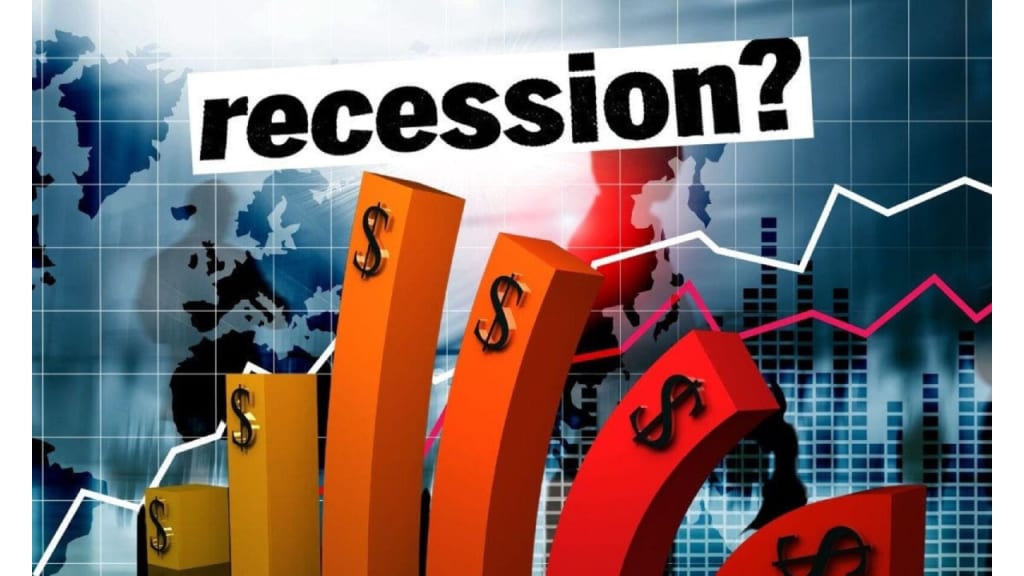
For more than a year, there hasn't been a single day when we haven't heard bad economic news concerning the United States, Europe, or Japan. Unemployment has risen, corporation profits have fallen, financial markets have crashed, and the housing industry has collapsed. Is it possible to sum up these advances in a single word? Yes, the word is "recession."
Many nations have experienced recessions as a result of the current global financial crisis. This pattern is consistent with previous data. In the previous four decades, leading countries have experienced synchronized recessions in the mid-1970s, early 1980s, early 1990s, and early 2000s. Because the United States has the world's largest economy and extensive economic and financial ties with many other countries, the majority of These internationally coordinated recession events also correspond with recessions in the United States.
Although Recessions in the United States have been milder over time, the present downturn is likely to reverse this tendency. With substantial decreases in consumption and investment now 16 months old, it might become one of the longest and deepest recessions since the Great Depression of the 1930s.
Declaring a recession
There is no official definition of recession, although it is often understood to relate to a time of economic activity reduction. Short-term declines are not called recessions.
Most pundits and analysts define recession as two consecutive quarters of fall in a country's real (inflation-adjusted) GDP—the total value of all goods and services produced (see "Back to Basics," F&D, December 2008). Although this definition is a good starting point, it has certain limitations. A focus on GDP alone is too limited, and it is frequently advisable to analyze a broader range of economic activity measurements to establish whether a country is truly hurting a recession.Other indicators can potentially give a more current picture of the economy's status.
The National Bureau of Economic Research (NBER), a private research institution that keeps a timeline,to determine the starting and conclusion dates of U.S. recessions, use a wider definition and take into account a variety of indices of activity.
A recession is defined by the NBER's Business Cycle Dating Committee as "a significant decline in economic activity spread across the economy, lasting more than a few months, and normally visible in production, employment, real income, and other indicators." A recession begins when the economy reaches its peak and concludes when it hits its low." In accordance with this description, the committee analyzes economic activity patterns using a broad collection of indicators, including not just GDP but also employment, income, sales, and industrial production.
Although an economy might exhibit signals of deterioration months before a recession,Assessing whether a country is in a real recession (or not) might take time.
For example, it took the NBER committee a year to pronounce that the current recession in the United States began in December 2007. This is comprehensible given that the decision-making process entails generating a wide reduction in economic activity over a long period of time after accumulating and filtering through numerous factors, many of which are sometimes susceptible to adjustments after their original release. Furthermore, different indicators of activity may display contradictory behavior, making it difficult to determine if the country is experiencing a broad-based fall in economic activity.
Why do recessions occur?
Understanding the causes of recessions has long been a focus of economic research. Recessions happen for a multitude of reasons. Some are linked to abrupt variations in the prices of inputs used in the production of products and services.
For example, a dramatic spike in oil prices can be a warning of an impending recession. As energy prices rise, the entire price level rises, causing aggregate demand to fall.
A country's decision to reduce inflation through contractionary monetary or fiscal policies can also cause a recession. When applied excessively, such policies might cause a drop in demand for products and services which finally leads to a recession.
Some recessions, like the present one, are caused by issues in the financial markets. Sharp gains in asset values and quick credit growth frequently correspond with rapid debt buildup. As firms and people become overextended and struggle to satisfy their debt commitments, they curtail investment and consumption, resulting in a decline in economic activity. Not all credit booms end in recessions, but when they do, these recessions are frequently more expensive than others. External demand declines can cause recessions, particularly in nations with substantial export sectors. The negative consequences of recessions in big nations like Germany, Japan, and the United States are quickly felt by their regional trading partners.
This is especially true during internationally coordinated recessions.Because recessions can have a variety of causes, forecasting them is difficult. The behavioral patterns of numerous economic variables, including credit volume, asset prices, and the unemployment rate, have been documented around recessions; however, while they may be the cause of recessions, they may also be the result of recessions—or, in economic parlance, endogenous to recessions. Despite the fact that economists employ a vast number of indicators to estimate the future behavior of economic activity, none has proven to be a credible predictor of whether a recession will occur. Some indicators, like asset values, the unemployment rate, specific interest rates, and consumer confidence, appear to be effective in predicting recessions, but economists continue to fall short of properly forecasting a large proportion of them.
What about a case of depression?
The current recession in the United States is the seventh since 1960. The average recession in the United States over that time period was roughly 11 months, with the largest (in 1973 and 1981) lasting 16 months and the smallest (in 1980) lasting eight months. The average peak-to-trough output fall was 1.7 percent, with the greatest recession (in 1973) resulting in a slightly more than 3 percent output loss. Although investment and industrial production declined in each recession, consumption fell in just three of them.
One common issue is how the current recession compares to a depression, particularly the Great Depression of the 1930s. There is no precise definition of depression, although most experts define it as a severe economic downturn.when the fall in GDP surpasses 10 percent.
Since 1960, sophisticated economies have seen only a few instances of depression. The most recent occurred in Finland in the early 1990s, when GDP fell by around 14 percent. That slump coincided with the disintegration of the Soviet Union, Finland's largest commercial partner. During the Great Depression, the United States' economy shrank by around 30% during a four-year period. Although the present recession is clearly severe, its production cost has been substantially lower than that of the Great Depression thus far.






Comments
There are no comments for this story
Be the first to respond and start the conversation.